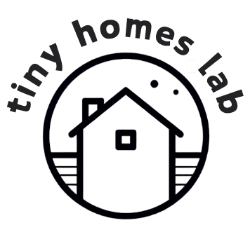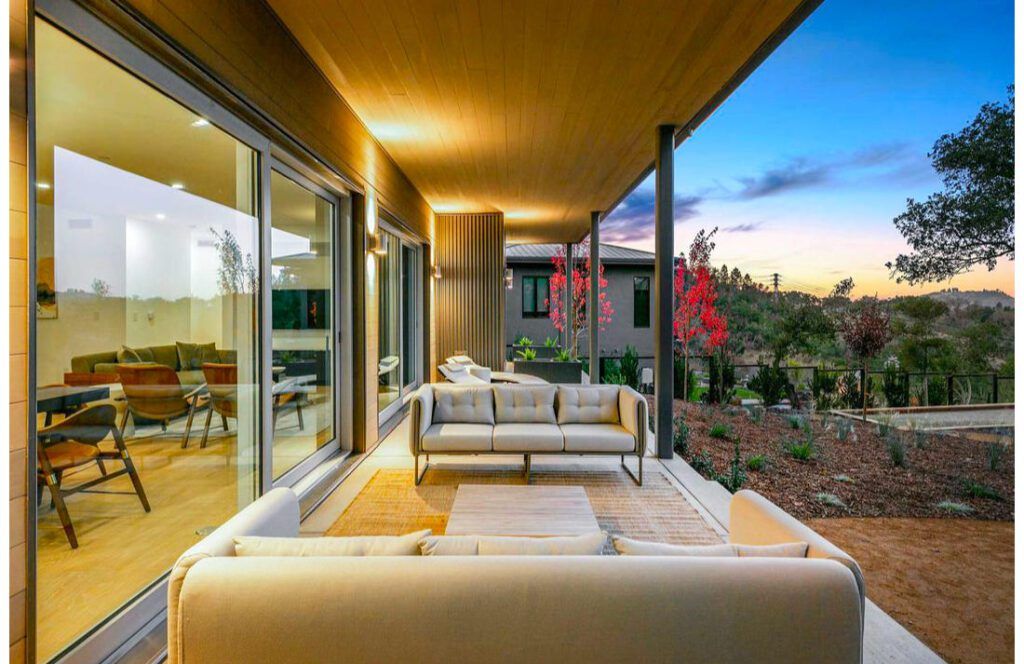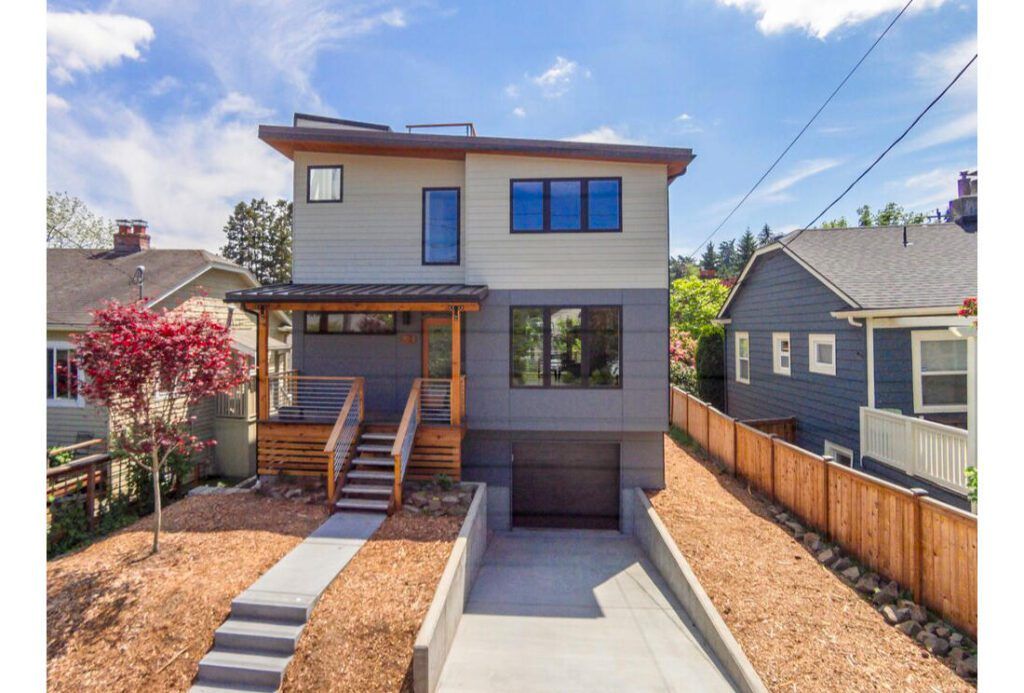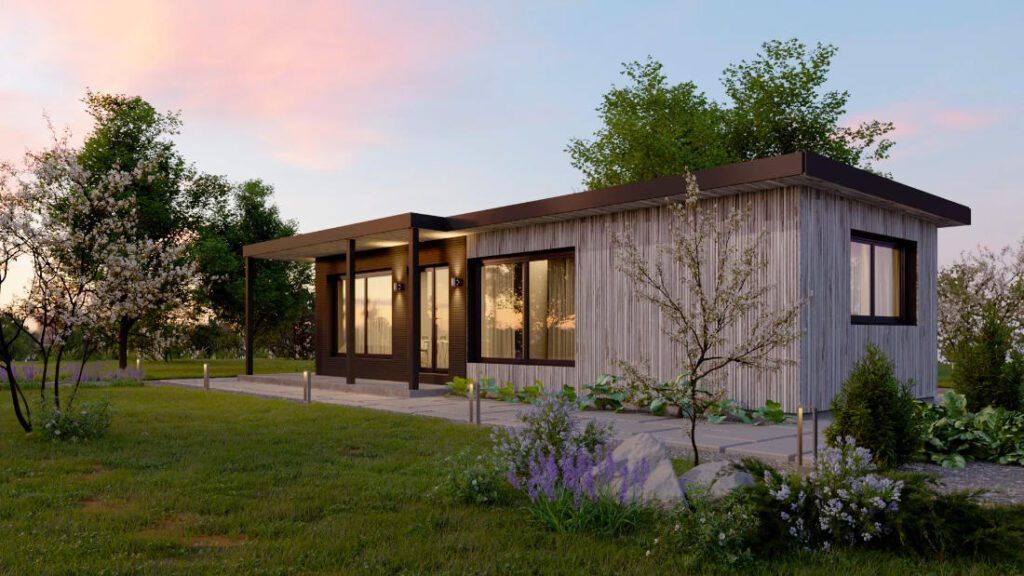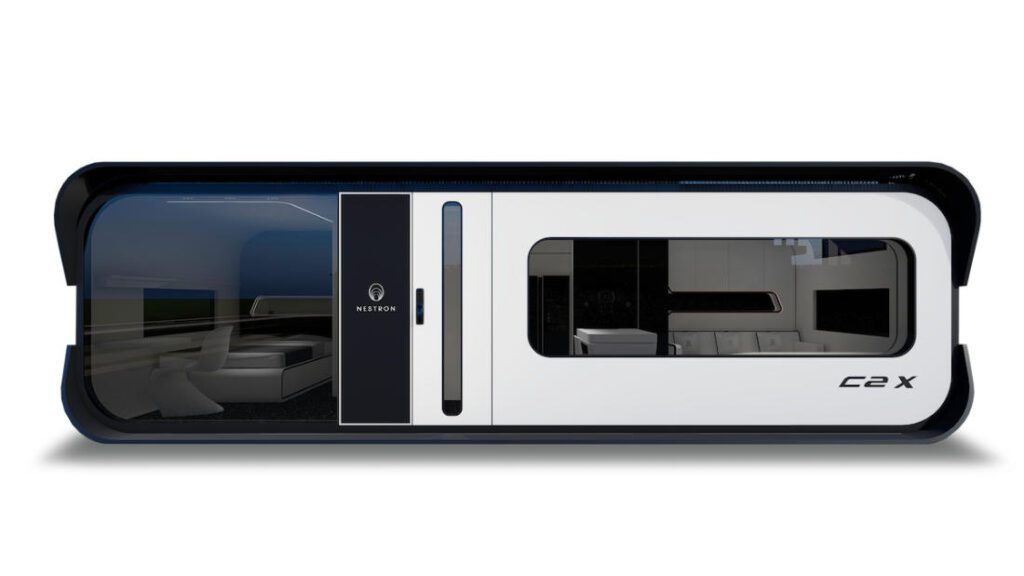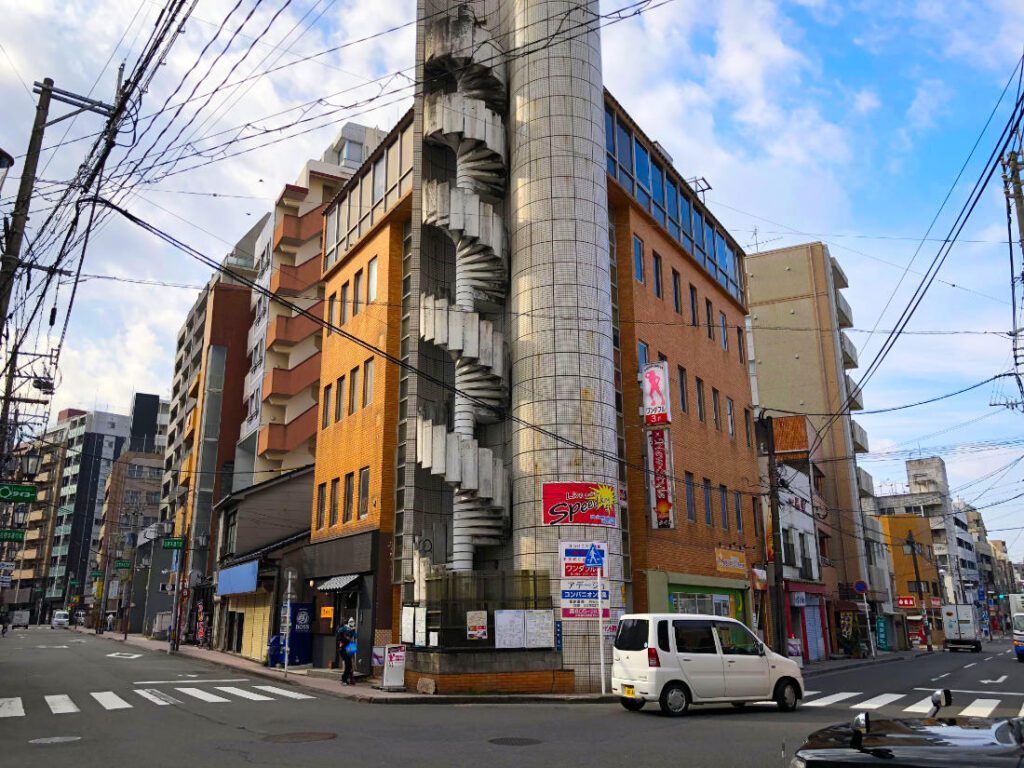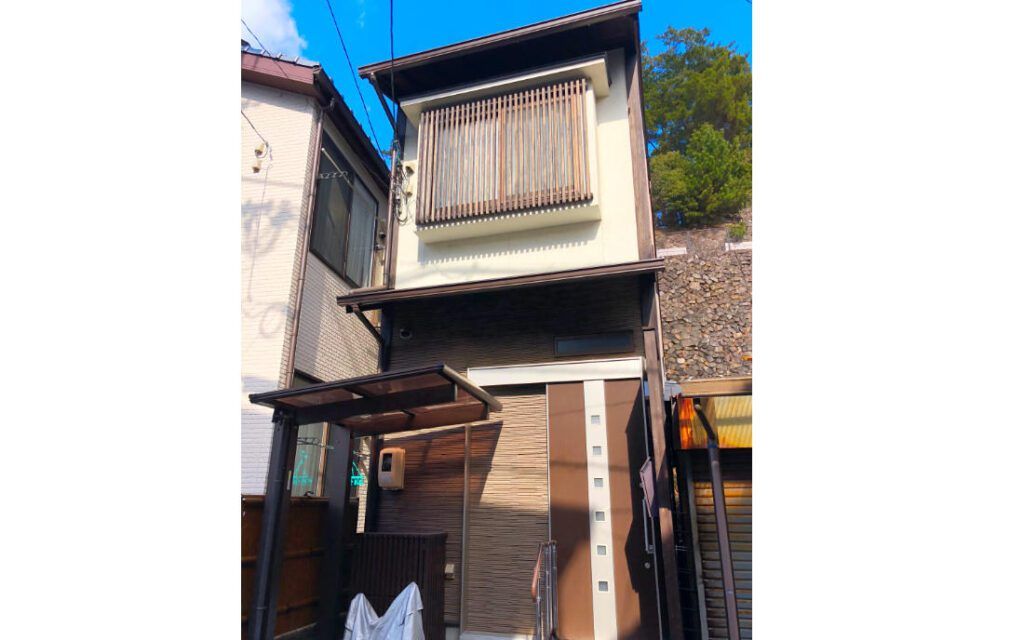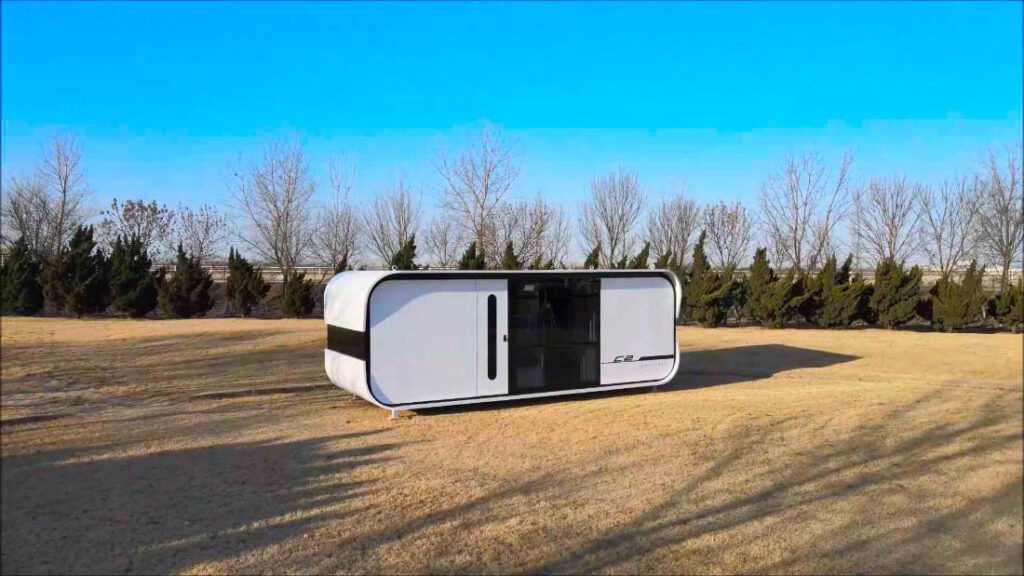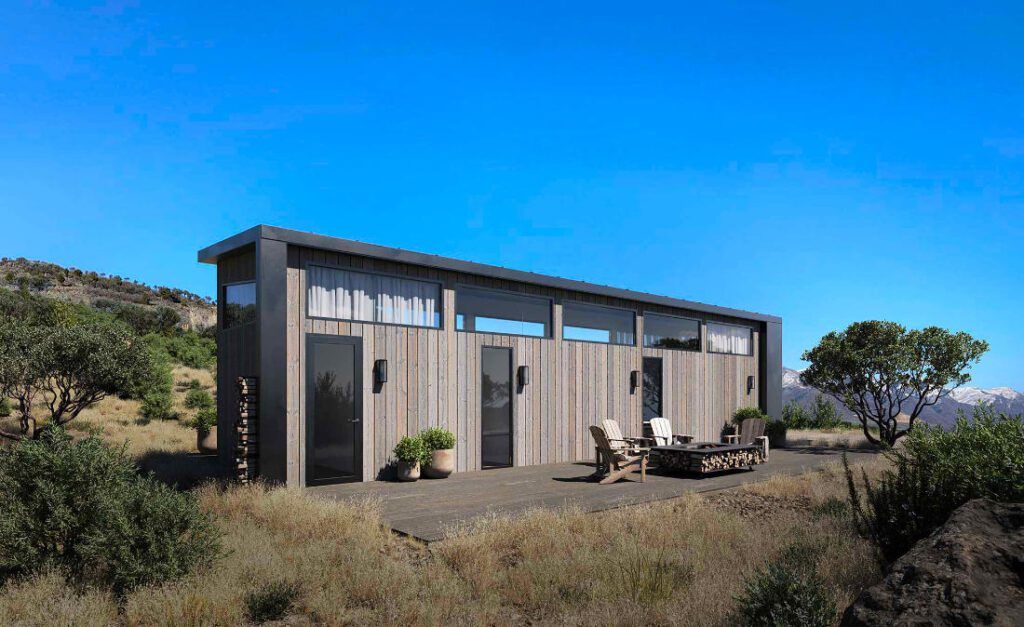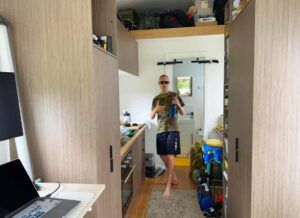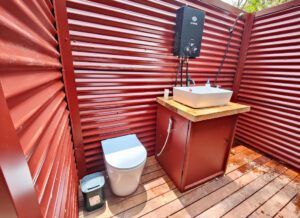Modular Homes Under 100k: Your Guide to Affordable Luxury
Imagine living in a beautifully designed, eco-friendly home without breaking the bank. Sounds too good to be true, right? Yet, that’s precisely what some of these modern prefab modular homes offer. These affordable luxury homes provide a unique combination of style, functionality, and sustainability - all within a reasonable budget.
So, let’s dive into the fascinating world of modular homes and explore the benefits, top companies, key features, customisation options, financing, and more!
Key Takeaways
- Modular homes under $100k offer luxurious, eco-friendly living at an unbeatable price.
- Look for energy efficiency and customisation options when choosing a modular home on a budget.
- Tiny homes provide unique and affordable modular living with reduced environmental impact.
The Appeal of Modular Homes Under 100k
Modular homes are a game-changer for those seeking luxury without breaking the bank. These modern prefab homes, also known as prefabricated homes or prefab houses, are much more cost-effective than traditional homes, easy to customise, and can be expanded as your needs evolve.
Not only do these homes boast cost-efficiency, but they also come with:
- Floor plans that make the most of any view
- Eco-friendly materials
- Elegant furniture (sometimes built in!)
- Floor-to-ceiling windows that invite natural light into your living space
Summing up, modular homes are an affordable, tailor-made, and eco-friendly substitute for traditional site-built homes.
Top Modular Home Companies With Affordable Options
To help you find your dream modular or prefab home, we’ve compiled a list of top modular construction companies offering high-quality, affordable options. These companies specialise in providing innovative solutions and designs to fit your needs and budget.
Let's look at a few of these companies in detail.
Method Homes
Method Homes offers an extensive collection of prefabricated homes, ranging from contemporary cabins to traditional style homes. Their focus on sustainability is evident across their series, featuring open floor plans connecting inhabitants to outdoor living spaces and utilising eco-friendly materials.
Being modular, you get a myriad of customisation options, allowing you to create a unique, sustainable, and affordable home.
However, you still pay around the US$500 mark per square foot. So for their 922 SQFT Option Series, that's about US$258,000. Which by my rough calculations is way over $100,000. Onward we go!
Blu Homes
Did you know that it takes only 16 weeks to produce an entire Blu Homes house? That's the beauty of modular! A Blu Home prefabricated house can also be powered by clean energy from solar panels with any extra energy stored in batteries.
Their approach involves fabricating components offsite and delivering them ready-to-assemble, ensuring a more efficient and eco-friendly construction process.
They have a huge range of prefab homes available. Here's what some of their architect-designed home models feature:
- Open, light-filled, indoor/outdoor spaces with angled or flat roof
- Healthy and sustainable materials
- Clean air, filtered water for healthy living
- Smart home assistant to improve your home lifestyle
Sounds great eh? However they start at US$310,000. No doubt a fair price for a prefabricated home. But, once again, no dice. Outside our range.
Nestron
Nestron are one of my all-time favourites (especially the Cube Two X). And they take the cake at US$99,800 which means they slide in just under the $100K mark.
These stunning prefabricated homes come ready to live. We're talking built-in furniture with a smart home system too, of course.
They are a lot smaller in size (398 SQFT) than some of the other prefab homes we talk about. But they are super functional, high-tech, and probably the closest thing to a future home that you're going to get!
Nestron offer a variety of features, such as:
- Horizontal glass panel windows
- Extra cabinets and floating shelves built in
- Open plan living areas (1 or 2 bedrooms available)
- User friendly hands-free lighting controls
To me, Nestron are the future of modular housing. (And kind of a hybrid mix between prefab and modular!)
Key Features to Look for in a Prefab House
If you're going for the under 100k mark, keep in mind the critical aspects like eco-efficiency, customisation options, and the quality of construction.
A wide range of customisations will normally be available, from floor plans and layouts to materials, finishes, and features like smart systems, underfloor heating, terraces, and more.
Additionally, modular homes can be expanded (ie: stacked) as your needs change, offering flexibility for the future.
How to Customise Your Modular Prefab Home on a Budget
To customise your home on a budget, consider choosing cost-effective materials like recycled materials, energy-efficient appliances, and low-maintenance finishes.
Discuss any custom tasks or items with your contractor, who might be able to offer ideas on how to achieve your desired customisation while staying within your budget.
The Nestron, for example, comes with almost everything you need to live well. For the other prefabs we mention, you can always ask questions about insulation, eco-efficiency, and safety features.
Financing Options for Modular Homes Under 100k
Purchasing a modular style home around the 100k to 200k mark is more attainable with various financing options available. Personal loans, financing programs for manufactured homes, and construction loans are all viable options for financing your dream home.
Personal loans are unsecured loans with fixed interest rates and repayment plans, which can be used to finance a prefab home. Financing programs for manufactured homes tend to offer lower interest rates and more flexible repayment terms compared to traditional loans, but check with your finance guru.
Construction loans, used to finance the construction of modular houses, typically come with higher interest rates and shorter repayment terms than traditional loans. Be sure to research and compare different lenders to find the best financing option for your needs.
The Building Process: From Factory to Finished Home
The modular home building process begins in a factory, where the modules are assembled and inspected before being shipped to the site. This factory construction process significantly reduces waste, making these homes a more environmentally friendly option.
Once the modules arrive at the site, they are assembled on the foundation, and the finishing touches are added, including utilities, painting, and landscaping. This streamlined process results in a faster construction time and lower costs. Maybe this is why these types of home are so popular!
Comparing Modular Homes to Traditional Site-Built Homes
Modular style homes offer numerous advantages over traditional homes, including:
- Typically 10-20% less expensive, allowing for a more affordable luxury living experience.
- Shorter construction times, allowing you to move in sooner.
- More customisation options, allowing you to create a home that suits your unique style and needs.
These advantages make modular homes an attractive alternative to traditional homes, especially when you know you can get your home much quicker and cheaper!
However, there are some disadvantages. For example, some locations may not permit the placement of manufactured homes, so it’s essential to research zoning restrictions before purchasing a property.
Overall though, modular homes provide a unique and cost-effective option for those seeking luxury living without the hefty price tag of traditional site-built homes, offering an affordable price.
The Environmental Benefits of Modular Housing
Modular style homes are an eco-friendly housing option due to their:
- Reduced carbon emissions
- Less waste
- Energy efficiency
- Controlled factory setting
The factory construction process cuts down waste by up to 70% compared to traditional construction methods. The controlled factory setting also reduces onsite pollution and environmental disruption.
Sustainable materials commonly used in modular homes include recycled steel, bamboo, hemp, and cork, further contributing to their eco-friendliness.
By choosing modular housing, you are not only investing in affordable luxury living but also supporting a sustainable and environmentally responsible lifestyle.
Tiny Homes: A Unique Approach to Modular Living
The tiny home movement offers a unique and affordable approach to modular living. These small, often modularly constructed homes provide a cost-effective and innovative solution for those on a tight budget.
Companies like Wheelhaus, located in Salt Lake City, Utah, offer pre-built homes created in a climate-controlled environment, showcasing clever layouts and designs that maximise the limited space available.
Choosing a tiny home not only allows for affordable luxury living but also promotes a minimalist lifestyle, focusing on the essentials and reducing one’s environmental footprint. This unique approach to modular living is perfect for those seeking a simpler, more sustainable way of life.
Tips for Choosing the Perfect Location for Your Modular Home
While choosing the perfect location for your modular home, consider significant factors like land cost, zoning laws, and utility access. Be sure to research whether the location permits the placement of a prefab style home before purchasing a property.
In addition, consider accessibility to major roads and proximity to necessary services, such as schools, hospitals, and shopping centres. It's always good to align your home life with your lifestyle and daily necessities!
In Summary
As you can see it takes a bit of research to find an affordable prefab home. They're out there though!
Just remember, the dream of owning a beautifully designed, environmentally responsible home is definitely within reach. So, why not explore the world of modular homes and embrace the future of affordable luxury living?
Frequently Asked Questions
What is the lowest price for a modular home?
The lowest price for a modular home is around US$50,000. You can get a Nestron shipped to you for a tad over US$99,000, while a beautiful (24 square metres) Coodo starts at around US$58,000.
What is the smallest modular home?
The Coodo Sun is 24 square metres. That's a 6 metre x 4 metre room (6.0m x 4.0m) which is probably one of the smallest prefabs. Of course you can always expand it to 48 and 72 square metres. Throw on a pergola and voila! You have a really attractive outdoor area. You're walking on solid wooden boards so you'd probably be outside most of the time!
Are modular homes lower quality?
Personally I think that modular homes are probably better quality than some of the traditional houses we build nowadays!
Just take a peek at what goes into a Coodo... sustainably sourced Douglas fir wood for the body, rock wool, Cembrit Windstopper Extreme for thermal insulation, extra strong timber for the load-bearing structure and double or triple glazed aluminum frame windows and doors!
Are modular homes reliable?
I'm sure modular homes are very reliable! But take a look at the Nestron... every house they build meets fireproof and earthquake-resistant standards. (Plus a 50 year construction warranty!) They're all-climate-suitable - with an insulation system in walls, double-tempered glass and fitted doors, you have the highest possible comfort and reliability.
Is it cheaper to build or buy prefab?
Prefab homes are generally less expensive than traditional builds, and come with less material waste due to the mass-produced sets of pieces. Not only do they often look better but sometimes you can't even tell if a house is a prefabricated home or a traditional build!
All things considered though, when you can get a Nestron for under US$100,000, I'd say it's a better option to order one. In fact, I might even go and do that now!
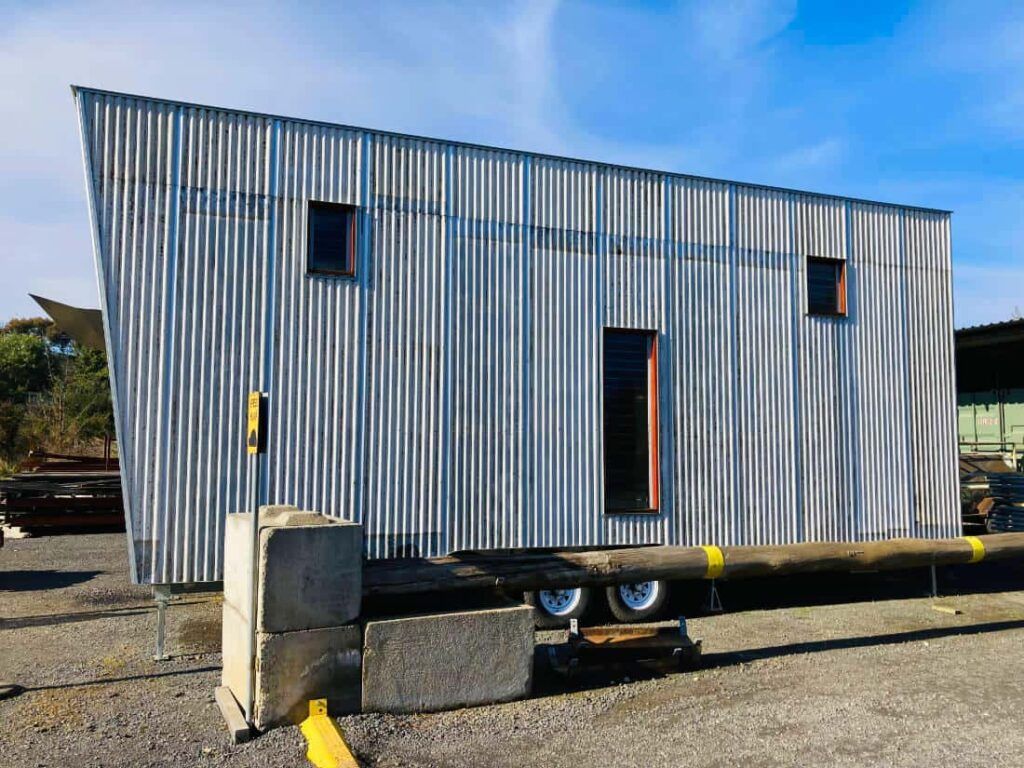
Sign Up and Subscribe for quick updates!
Tiny home laboratory gives you ideas, insights, tips and helpful ways to get you started with a tiny house as quick as possible!
Disclaimer: Tiny Homes Lab is reader-supported. When you buy through links on our site, we may earn an affiliate commission. As an Amazon Associate we earn from qualifying purchases.
Share this article:
